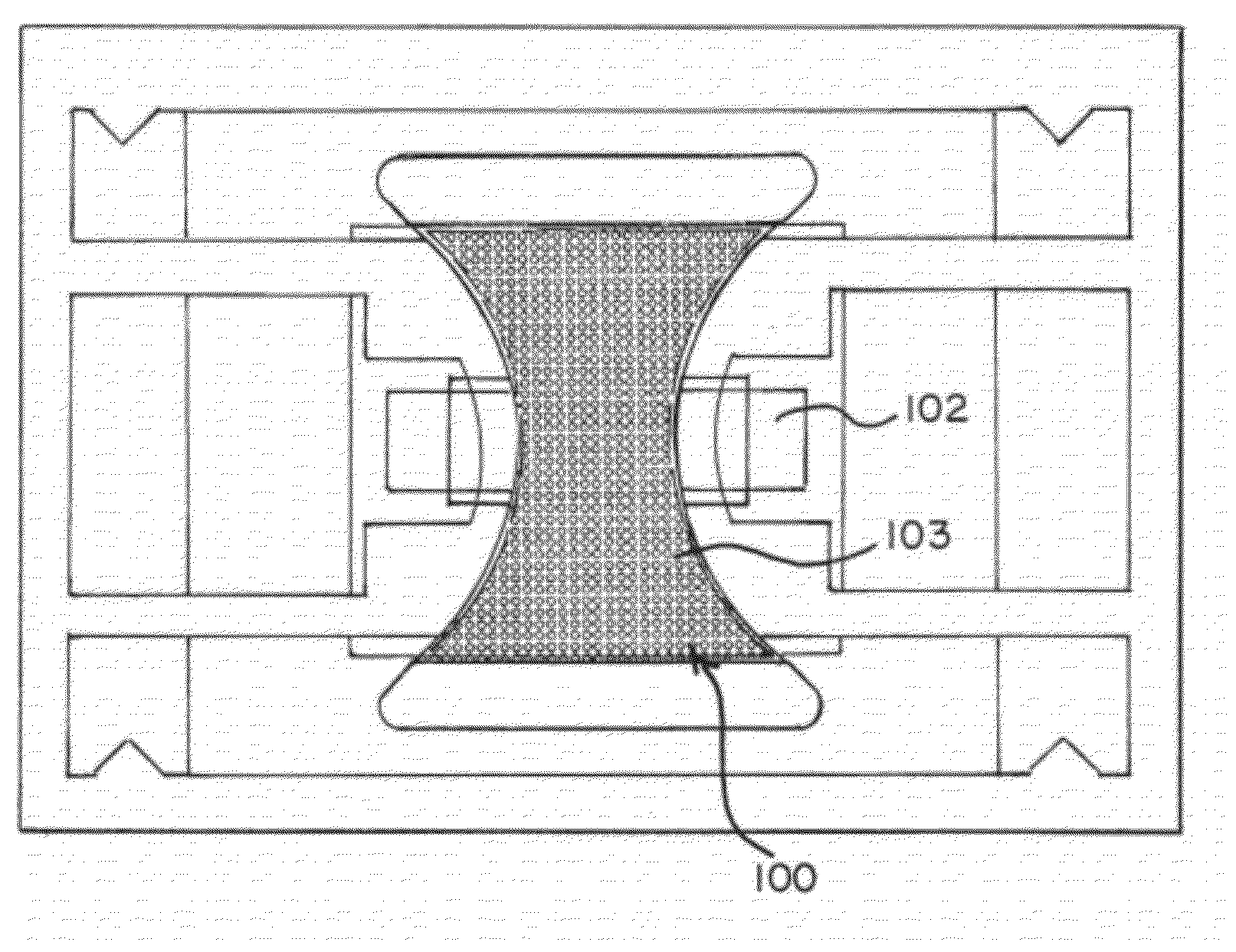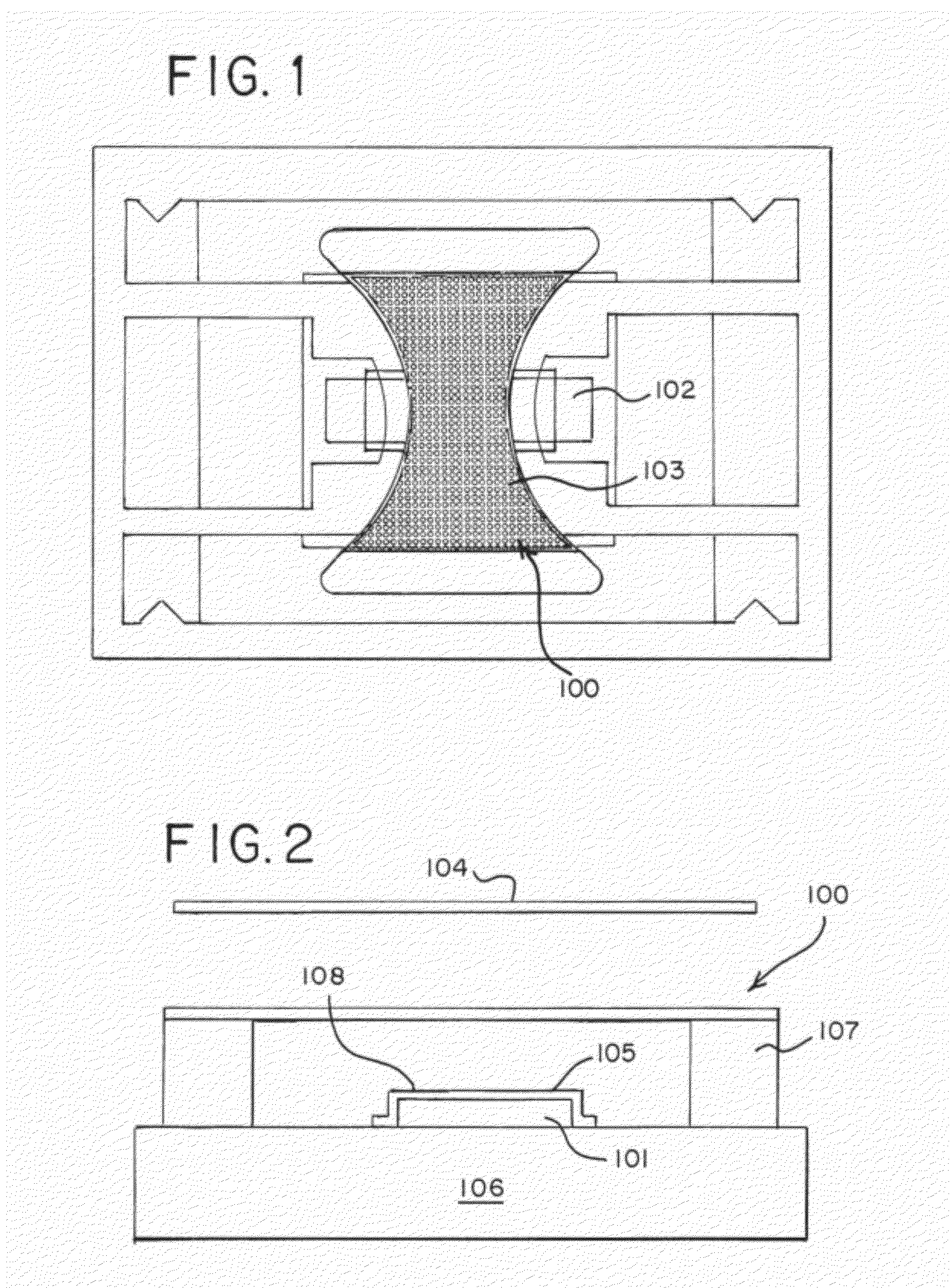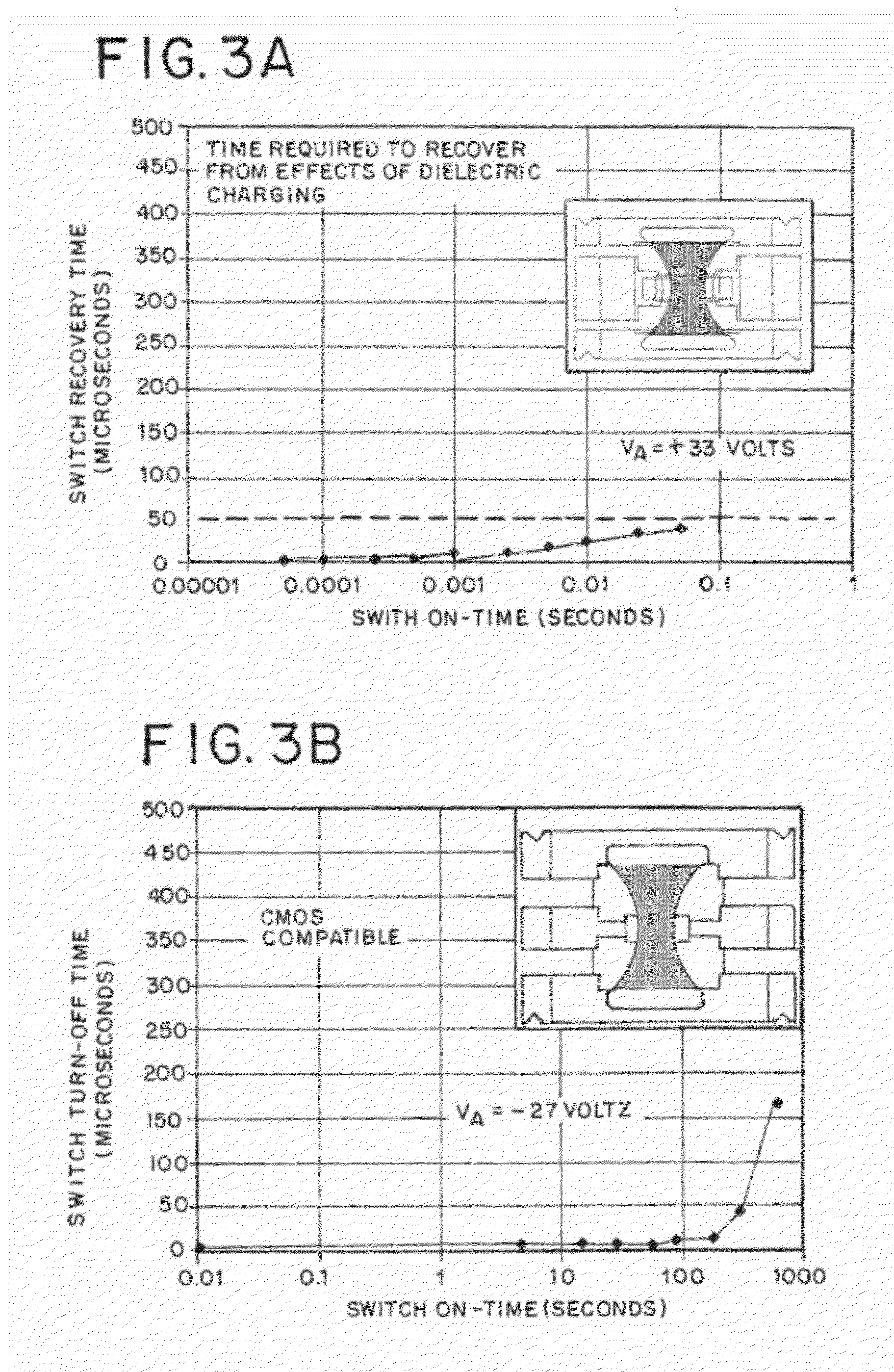Ultrananocrystalline Diamond Films with Optimized Dielectric Properties for Advanced RF MEMS Capacitive Switches
a capacitive switch and diamond film technology, applied in electronic switching, relays, pulse techniques, etc., can solve the problems of lack of reliability, limited acceptance in the industry, and main limitation of lifetime of dielectric charging, so as to achieve reliable, effective and efficient
- Summary
- Abstract
- Description
- Claims
- Application Information
AI Technical Summary
Benefits of technology
Problems solved by technology
Method used
Image
Examples
Embodiment Construction
[0067]The following is a detailed description and explanation of the preferred embodiments of the invention and best modes for practicing the invention.
[0068]Referring to the drawings, a radio frequency (RF) microelectromechanical (MEMS) capacitive switch 100 (FIGS. 1 and 2) is moveable for a switching time from an off position in an off state to an on position in an on state. The RF MEMS capacitive switch can have: a bottom electrode 102 comprising metal that provides a RF signal path; a top electrode 104 comprising an RF ground and a direct current (DC) ground; a moveable metallic membrane 106, and multiple layered (multi-layered) dielectric films 108 with electrical leaky characteristics and providing multiple dielectric insulating layers on the bottom electrode. The RF MEMS capacitive switch can also have undercut access holes 110. The RF MEMS capacitive switch can have a substrate 112, such as a silicon on sapphire (SOS) substrate 114, positioned below the bottom electrode and ...
PUM
| Property | Measurement | Unit |
|---|---|---|
| Temperature | aaaaa | aaaaa |
| Time | aaaaa | aaaaa |
| Length | aaaaa | aaaaa |
Abstract
Description
Claims
Application Information
 Login to View More
Login to View More - R&D
- Intellectual Property
- Life Sciences
- Materials
- Tech Scout
- Unparalleled Data Quality
- Higher Quality Content
- 60% Fewer Hallucinations
Browse by: Latest US Patents, China's latest patents, Technical Efficacy Thesaurus, Application Domain, Technology Topic, Popular Technical Reports.
© 2025 PatSnap. All rights reserved.Legal|Privacy policy|Modern Slavery Act Transparency Statement|Sitemap|About US| Contact US: help@patsnap.com



